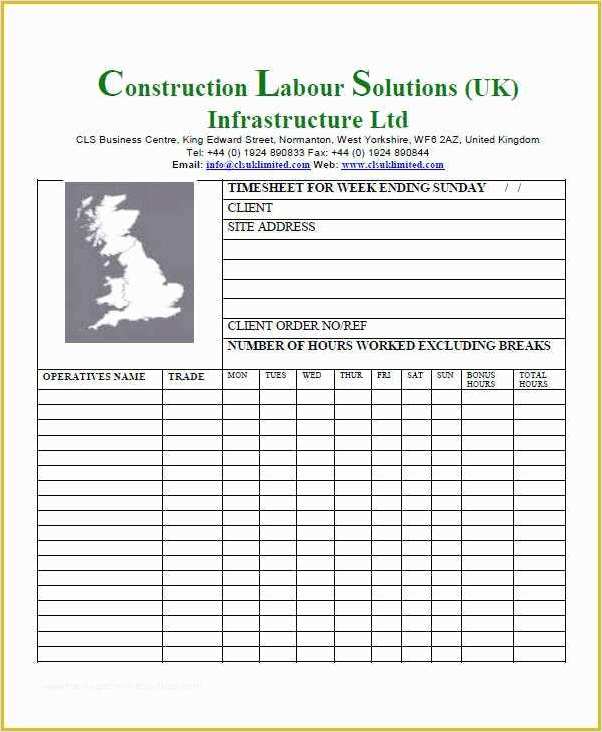Construction projects involve a wide range of activities, from planning and design to execution and completion. With so many moving parts, it is crucial for construction companies to effectively track and manage the time spent by their employees on different tasks. This is where a construction employee timesheet comes into play. In this article, we will explore what a construction employee timesheet is, why it is important, what to include in it, how to write one, and common mistakes to avoid.
What is a Construction Employee Timesheet?
A construction employee timesheet is a document used to record the hours worked by employees on various construction projects. It serves as a tool for tracking and managing labor costs, project progress, and resource allocation. By accurately recording time spent on different tasks, construction companies can analyze productivity, estimate project costs, and ensure compliance with labor laws and regulations.
Why Do You Need a Construction Employee Timesheet?
A construction employee timesheet offers several benefits for both construction companies and their employees:
- Accurate project costing: By tracking the time spent by employees on different tasks, construction companies can accurately estimate project costs and allocate resources accordingly. This helps in effective budgeting and avoiding cost overruns.
- Productivity analysis: Timesheets provide valuable insights into the productivity of employees and teams. By analyzing the time spent on various activities, construction companies can identify bottlenecks, optimize workflows, and improve overall efficiency.
- Compliance with labor laws: Timesheets help construction companies ensure compliance with labor laws and regulations. Accurate record-keeping of employee work hours is essential for calculating wages, overtime pay, and determining eligibility for benefits.
What to Include in a Construction Employee Timesheet?
A well-designed construction employee timesheet should include the following information:
- Employee details: Start by including the employee’s name, job title, and identification number.
- Date and time: Record the date and time for each entry. This helps in tracking the duration of each task and identifying any discrepancies.
- Project details: Specify the project name, location, and relevant details. This allows for accurate project costing and resource allocation.
- Task description: Provide a brief description of the task or activity performed by the employee. This helps in analyzing productivity and tracking progress.
- Hours worked: Record the number of hours worked by the employee on each task. This includes regular hours, overtime, and any breaks or time off.
- Supervisor approval: Include a section for the supervisor or project manager to review and sign off on the timesheet. This ensures accountability and accuracy.
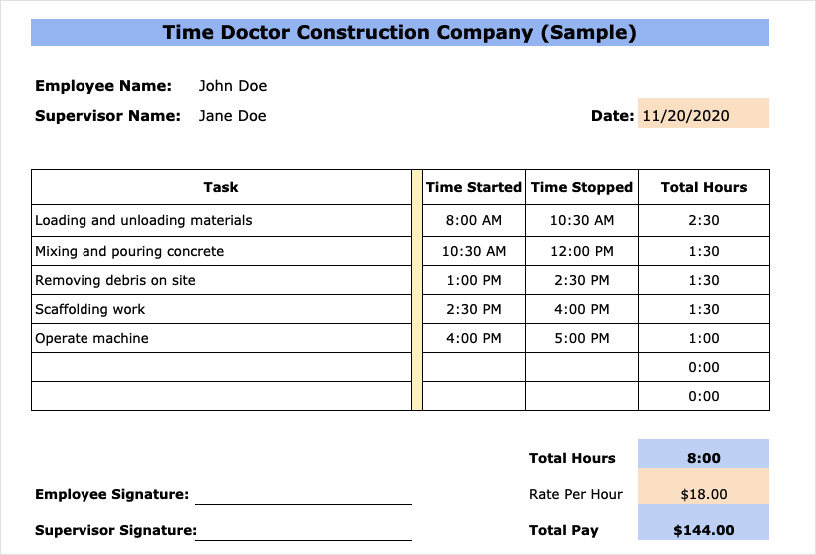
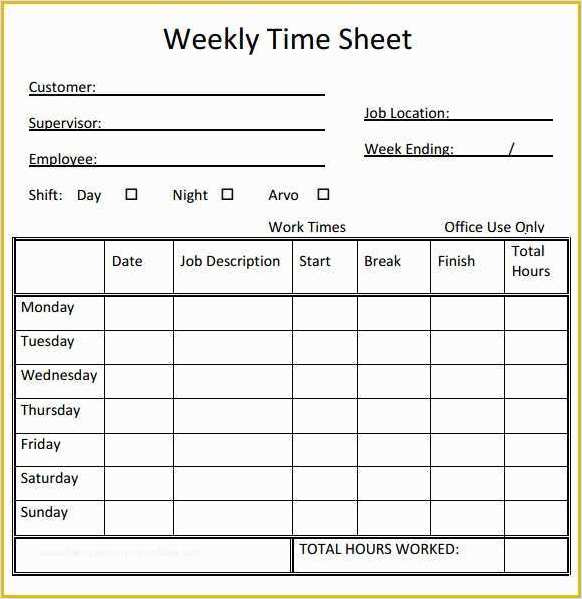
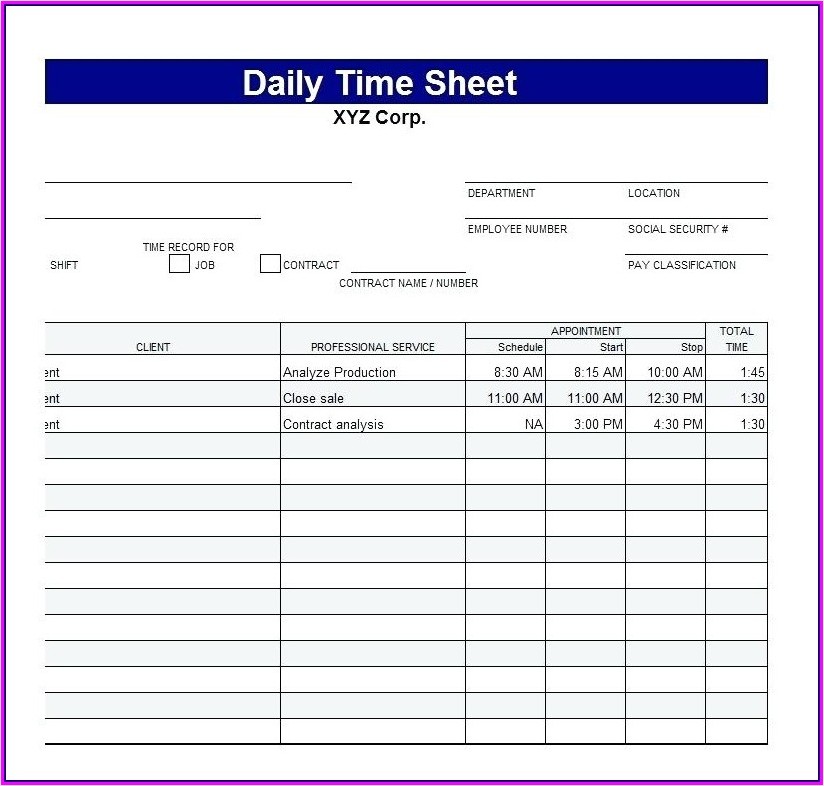
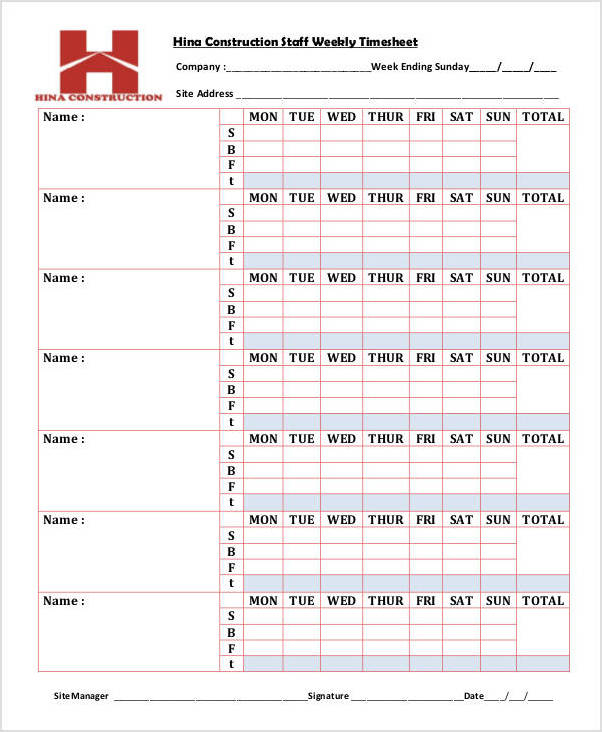
How to Write a Construction Employee Timesheet?
Writing a construction employee timesheet requires attention to detail and accuracy. Here are some steps to follow:
- Choose a format: Decide on a format for your timesheet, whether it’s a spreadsheet, a digital tool, or a printed form.
- Include necessary fields: Make sure to include all the relevant fields mentioned earlier, such as employee details, date and time, project details, task description, hours worked, and supervisor approval.
- Use a consistent layout: Maintain a consistent layout throughout the timesheet to ensure clarity and ease of use.
- Provide clear instructions: Include instructions on how to fill out the timesheet correctly to avoid any confusion or errors.
- Regularly update the timesheet: Encourage employees to update their timesheets regularly, preferably daily, to ensure accuracy and timeliness.
Mistakes to Avoid
When creating and using a construction employee timesheet, it is important to be aware of common mistakes that can compromise its effectiveness:
- Incomplete entries: Ensure that all fields are filled out accurately and completely to avoid missing or incorrect information.
- Unapproved timesheets: Make sure that the timesheets are reviewed and signed off by the appropriate supervisor or project manager to ensure accuracy and accountability.
- Delayed updates: Encourage employees to update their timesheets regularly and promptly to avoid inaccuracies and delays in project tracking.
- Incorrect calculations: Double-check all calculations to ensure that hours worked and totals are accurate. This helps in avoiding errors in project costing and payroll.
- Lack of training: Provide training and guidance to employees on how to fill out the timesheets correctly to avoid confusion or mistakes.
- Failure to address discrepancies: If there are any discrepancies or inconsistencies in the timesheets, promptly investigate and address them to maintain data integrity.
A construction employee timesheet is a valuable tool for tracking and managing labor costs, analyzing productivity, and ensuring compliance with labor laws. By following the guidelines outlined in this article and avoiding common mistakes, construction companies can effectively utilize timesheets to improve project management and drive success.
Construction Employee Timesheet Template – Download
